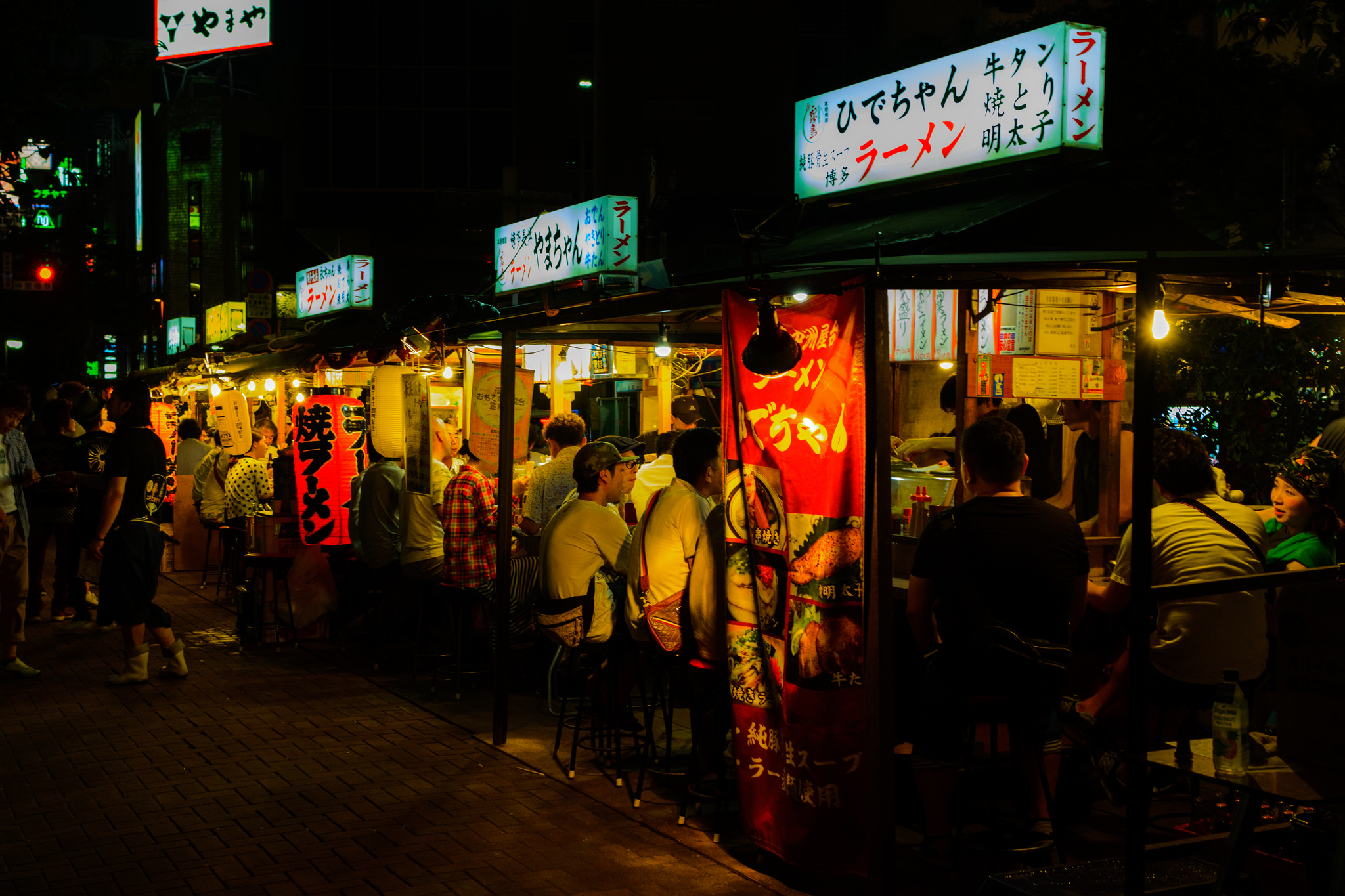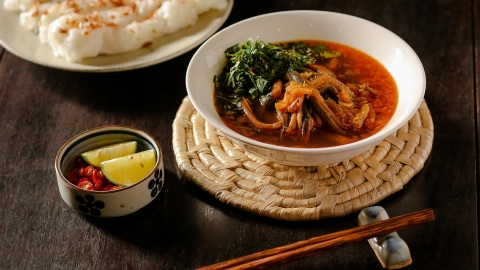Behind tarpaulins that shield the chilly winter air, customers sit close together on worn wooden stools around Mamichan’s miniature kitchen. A steaming pot of oden – a Japanese hot pot – fills the small space with the aroma of yakitori skewers sizzling on a charcoal grill.
This is one of the yatai – mobile restaurants – that were once common across Japan but have dwindled in number in many cities. However, in the southwestern city of Fukuoka, the yatai still exists, compacted into a cart that the owner can take to a fixed location six nights a week, creating a unique, friendly dining experience.

Customers browse the yatai that line the banks of a canal in Fukuoka's Nakasu district.
Even here, one of the last strongholds of yatai, their numbers have dwindled. In 1960 there were around 400, but today there are fewer than 100. As in the rest of the country, local authorities have been trying to clamp down on “noisy and unsightly” nightspots that disturb residents and litter.
But this particular culinary tradition is becoming increasingly popular with both domestic and foreign tourists, which has begun to change some of the “hawker culture.” In 2016, the first hawker licenses in decades were issued after the city’s mayor took a stand for yatai. And new creative perspectives on yatai have attracted a younger generation of customers, with the topic being discussed extensively on Instagram and food blogs.
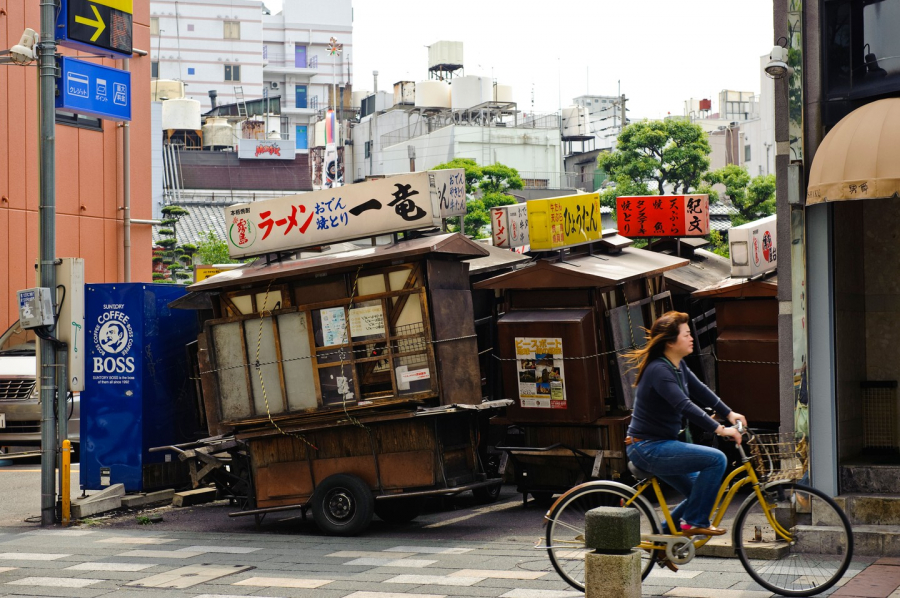
Yatai street vendors in Fukuoka
Ms Mamichan, 56, clearly enjoys the job, chatting happily with customers while cooking and serving drinks at her eponymous yatai, but she says it wasn’t always that way. Her husband bought the yatai without asking her when she was just 23, and she was forced to get involved.
Running a yatai is hard work - opening around 6pm and not closing until 1am. After closing there is cleaning, packing up and pulling the cart back to the parking lot and most of the day is spent preparing food.
"At first, my motivation was just to try to work to support my child, I didn't like it," Mamichan said. "There were a lot of young people my age, they were so fashionable and having fun and I thought, 'Why am I the only one doing this?'"
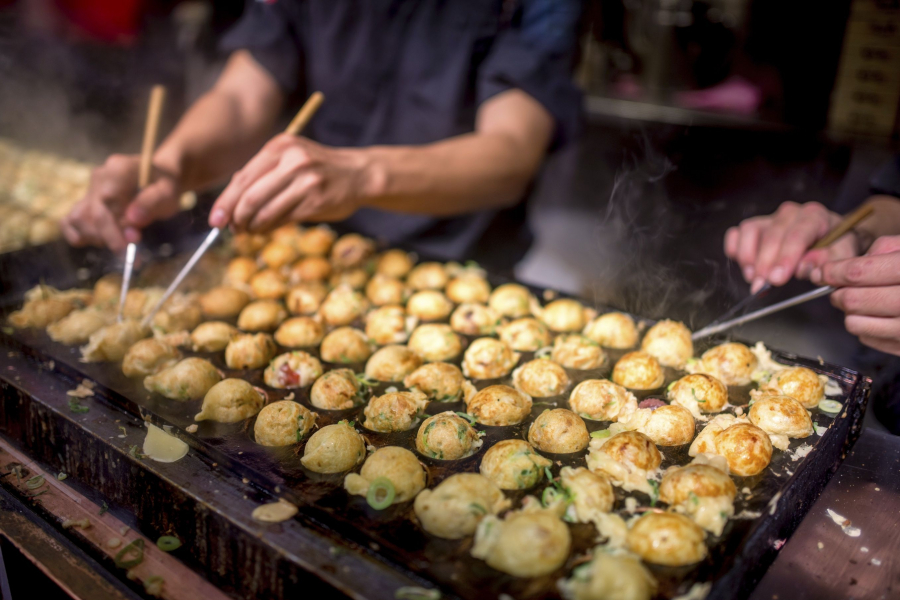
Takoyaki grilled octopus balls, a popular street food at yatai
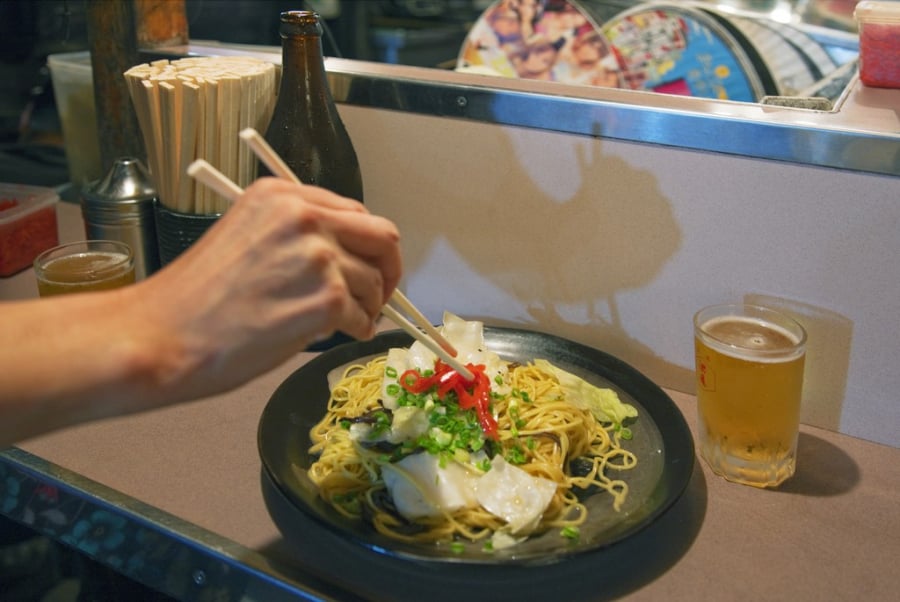
A snack of mixed noodles at a yatai
But over the years, she says, she developed a pride in her work and a growing appreciation for the yatai that brought her into contact with a diverse range of people.
"I can meet many people, including people from outside Japan, from many countries," she said. "I feel like I've visited many countries so I don't have to travel around."
While we were eating, Mamichan stood up to bid farewell to three guests - a young man from Tokyo and two young women from Osaka, who had just become friends over beer and hot bowls of noodles, then left together for the night.
That’s the spirit of yatai. People embrace Fukuoka’s friendliness. Everyone appreciates the social connection that yatai provide, a welcome break from rigid Japanese society. Sitting together in tight spaces and loosened up by beer and shochu – a local liquor popular on the southern island of Kyushu – people feel free to let their guard down.
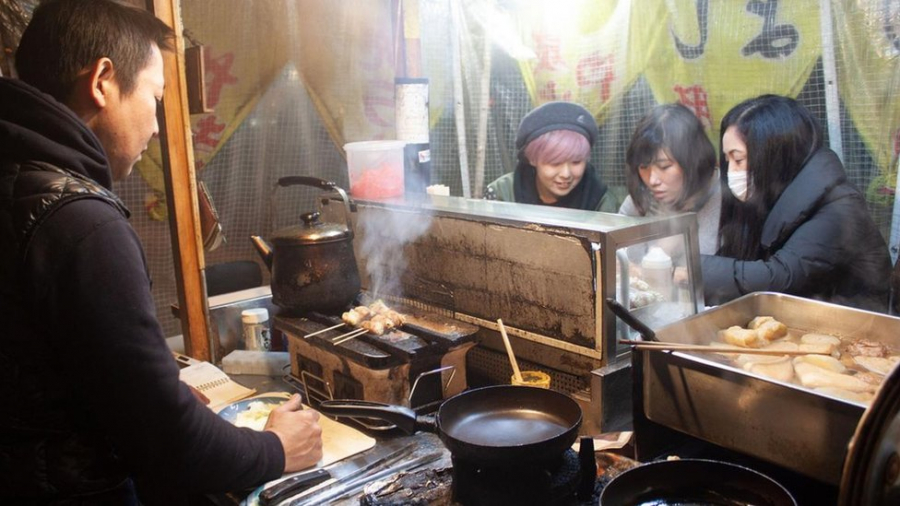
Eiji Abe, owner of yatai Maruyoshi, believes that yatai are informal places so people do not need to be formal or reserved with strangers.
“It's not just the interaction with the owner, but also the interaction with other customers – that's the appeal of yatai,” said Eiji Abe, 49, who runs a yatai called Maruyoshi. “Of course many customers come just to drink or eat, but many people like to interact.”
Why such a seemingly important social institution has largely disappeared in Japan is a matter of debate. There are many theories, Eiji says, ranging from American occupation forces ordering the yatai to close after World War II; to officials trying to tidy up cities when the Emperor visited the country after the war; to the changing nature of Japan’s streets as the growing number of cars squeezed out the yatai.
The survival of yatai in Fukuoka is largely due to the quick organization of yatai owners into an association, but even there they are being squeezed. A 1995 law prevented new yatai from being established or their licenses being transferred to anyone other than a direct relative. The yatai street in the north of the city was also closed to make way for government-sanctioned street vendors now scattered throughout the city.

Kensuke Kubota serves customers at his yatai Telas & Mico
But it's not just regulation, says Kensuke Kubota, 40, who runs a yatai called Telas & Mico. Changing attitudes also play a role, he says, especially among younger generations who see yatai as places for old people and drunken businessmen. "Young people think yatai are not a very fashionable place to hang out," says Kubota. "But I'll show them, and maybe change their minds."
The clean, minimalist design of his turquoise yatai resembles a Borough Market stall, complete with a menu that's distinctly British – homemade sausages and mashed potatoes, bruschetta and tandoori chicken skewers. It's no surprise, then, that Kubota began his culinary training at a Fish & Chips shop in Plymouth during a language exchange. After interning at a series of Michelin-starred restaurants in London, he returned to Fukuoka and opened a restaurant. When he heard a few years later that the government had approved new yatai licenses, he jumped at the chance.
"I used to go to yatai with my father many times," he said. "But I didn't want to make a traditional yatai. I wanted to create a new-style yatai. I wanted to change the way people think about yatai."
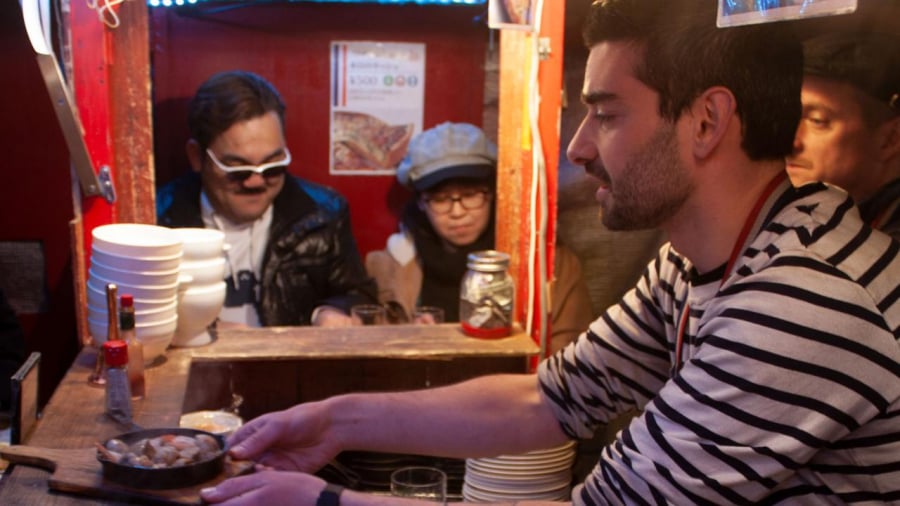
One of Remy Grenard's assistants serves customers at Chez Remy, a French bistro.
Kubota isn’t the only one breaking the mold. Remy Grenard, a 42-year-old Frenchman, is Fukuoka’s first foreign yatai owner, serving the kind of food you’d only find in a French bistro – snails are a big hit, he says. He’s lived in Japan for 18 years and previously owned a restaurant and a bakery in Fukuoka, but when the city started accepting new yatai applications, a friend encouraged him to apply.
Initially, he only worked two days a week, but as the yatai became busy, he decided to close his other restaurants and work full-time at Chez Remy yatai. "I love cooking and I love meeting people," he said, and a yatai allowed him to do both at the same time.
The combination of his bubbly personality and reasonably priced Gallic delicacies has gone down well in a country where French restaurants are often high-end. Ultimately, however, he says the menu is not the most important thing about any yatai.
“The food isn’t important,” he says. “The most important thing is that people enjoy themselves in Fukuoka.” Borrowing a phrase from his native tongue, yatai means “bonhomie” (warm friendliness).
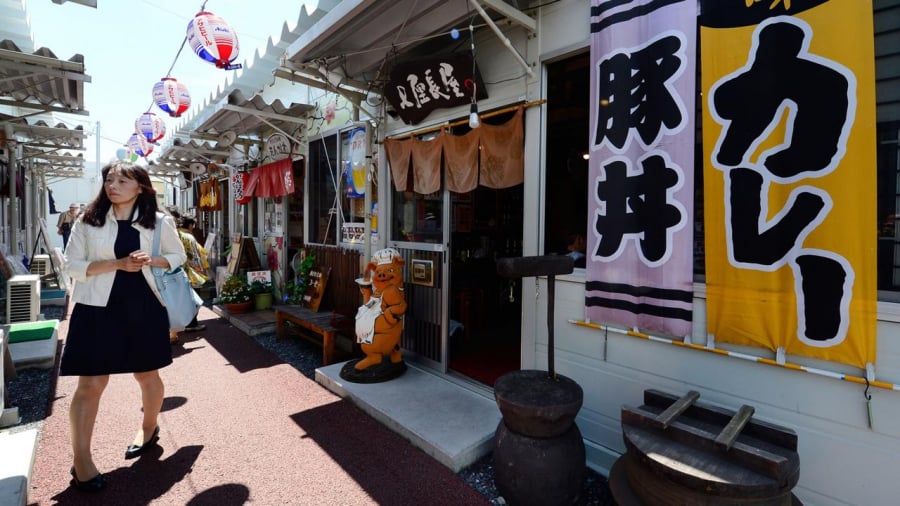
The yatai in Ofunato, an area devastated by the 2011 tsunami, are popular with tourists and locals alike.
But while increased government support and the emergence of new yatai is breathing new life into the struggling industry, the question is whether this revival will see them lose their community roots and become more like the trendy food streets of every international city.
Mamichan said that years ago the clientele was mostly ordinary people and business people, but in recent years, tourists from Japan and neighboring countries such as China and South Korea have become the majority. "Sometimes regular customers come in and we're so busy with tourists that they don't have a seat," she said. "This is a big change."
She enjoys meeting new people, but the spirit of yatai isn’t just about a fun atmosphere, Mamichan said, but also about building relationships. She might give customers a free meal when they’re struggling, but people will come back and buy food when they have money. She feels some of the newer yatai are becoming more like regular restaurants.
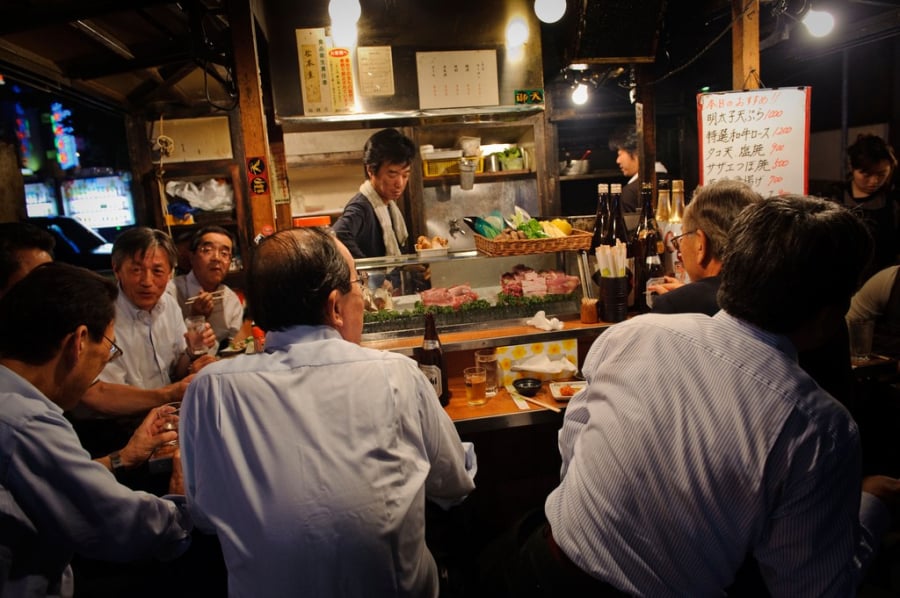
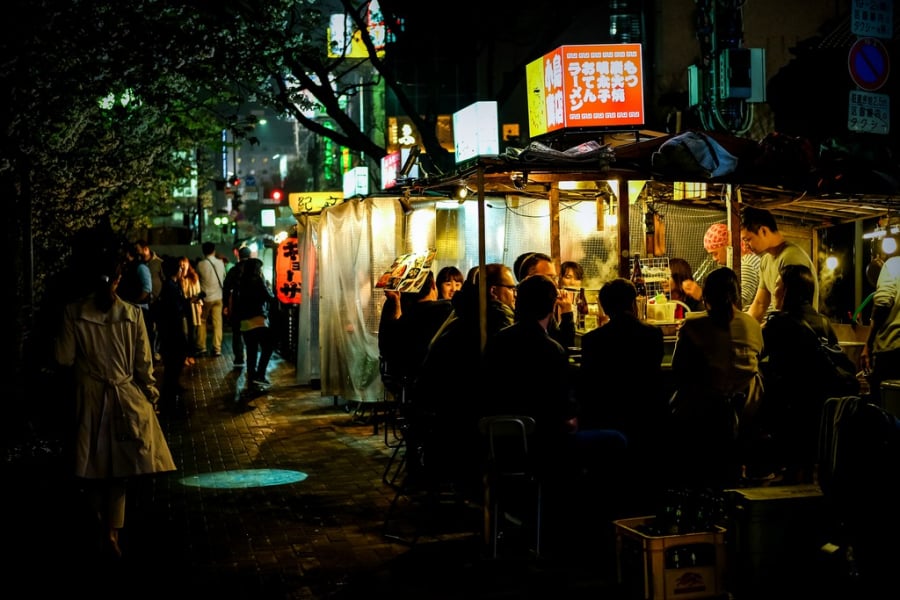
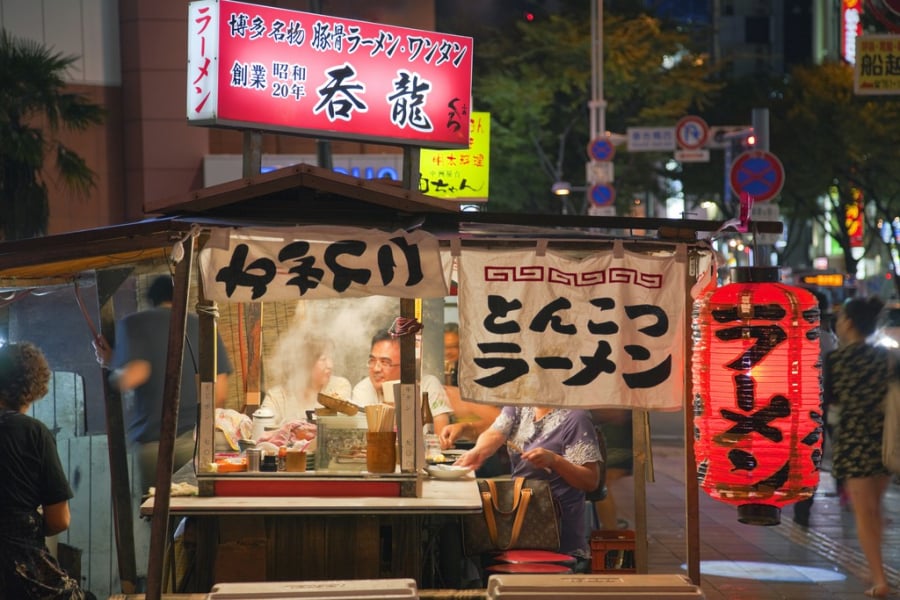
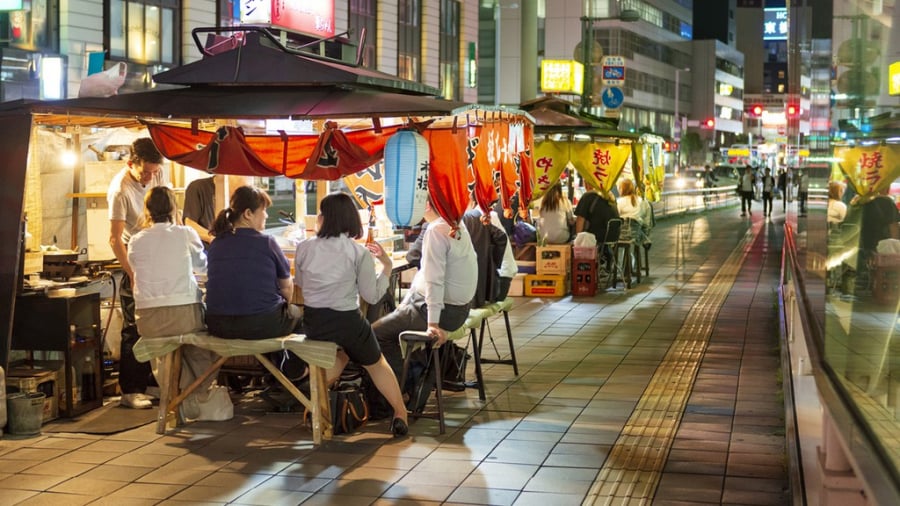
This is evident in the city’s Nakasu nightlife district. Representatives try to lure visitors into yatai on either side of the canal, and long lines form outside the most popular yatai even after the season is over. Many say yatai can be very profitable, especially if they can keep up with the high volume of customers.
It’s easy to see this in the city’s Nakasu nightlife district. Representatives try to talk tourists into yatai along the canal, and long lines form outside the most popular yatai even after it’s out of season. Many say yatai can be a big moneymaker, especially if they can keep up with the high volume of customers.

Nakasu Nightlife District of Fukuoka City
Kubota feels there are parallels with pubs in the UK that are struggling, as changing attitudes among younger generations mean they are no longer packed with regulars every night. But at the same time, he's inspired by the rise of gastropubs in the UK, and he thinks Fukuoka's yatai need a similar reinvention to keep up with modern tastes. He hopes to see more innovative ideas as the government accepts new applications. "Not everything needs to change, but you have to do something new," Kubota says. "It's not the end of the traditional yatai, but the concept needs to suit the new generation."
And the yatai business isn't all about cut-throat competition, Remy says. Japanese people have diverse tastes and people often visit multiple yatai in a single night, so a little variety doesn't hurt, and can actually attract customers who don't frequent yatai. "Customers change, people change," he says. "Tradition is important, but now we're creating the next yatai tradition."






